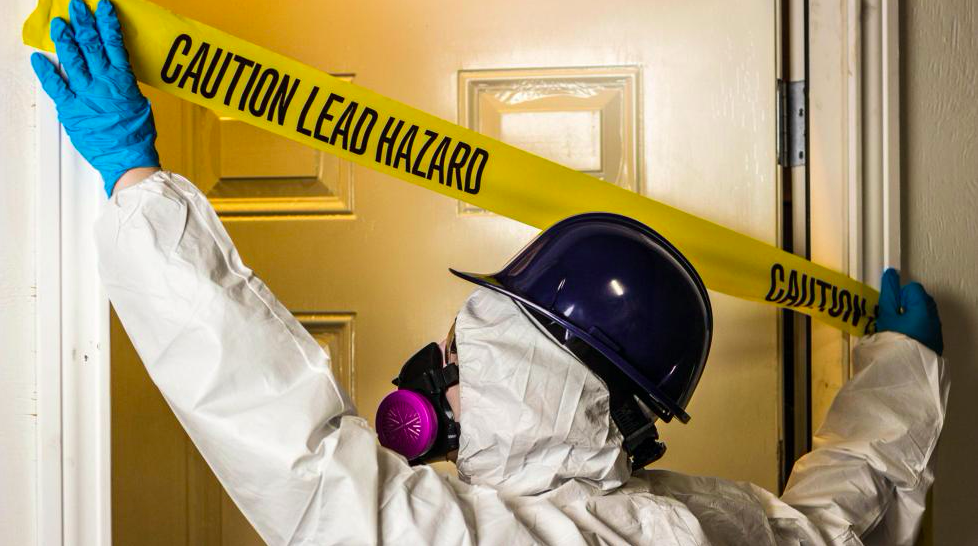Lead contamination is a significant concern in older residential properties, particularly those built before 1978. The presence of lead-based paint and other lead-containing materials poses health risks, especially to children and pregnant women. This comprehensive guide explores methods for effective lead abatement Phoenix AZ, focusing on lead removal and lead paint removal strategies to create safer living spaces.
Why Is Lead Abatement Essential?
Health Risks of Lead Exposure
Lead exposure can result in severe health issues, including:
• Neurological Damage: Learning difficulties, behavioral problems, and reduced cognitive function in children.
• Chronic Illnesses: High blood pressure, kidney damage, and reproductive problems in adults.
• Developmental Delays: Increased risks for pregnant women and their unborn children.
Impact on Property Value
Properties with unresolved lead hazards are less appealing to buyers and may face regulatory penalties. Effective lead abatement not only ensures safety but also enhances property value and marketability.
How to Identify Lead Hazards in Your Home
Common Sources of Lead
• Lead-Based Paint: Found in walls, windows, doors, and trim.
• Dust and Soil: Lead particles from deteriorating paint can settle in household dust and outdoor soil.
• Plumbing: Older pipes and fixtures may leach lead into the water supply.
Methods to Detect Lead
• DIY Test Kits: Affordable kits can provide quick results for detecting lead paint.
• Professional Assessments: Certified inspectors use advanced tools like X-ray fluorescence (XRF) to identify lead hazards.
• Laboratory Testing: Soil and water samples can be analyzed for lead content.
Top Methods for Lead Abatement
1. Encapsulation
Encapsulation involves applying a specialized coating to seal lead-based paint and prevent the release of lead particles.
Benefits:
• Cost-effective and quick to implement.
• Suitable for surfaces in good condition.
Limitations:
Not ideal for areas prone to wear or damage.
2. Enclosure
This method involves covering lead-painted surfaces with new materials, such as drywall or paneling, to prevent exposure.
Benefits:
• Durable and long-lasting.
• Effective for high-risk areas like windows and doors.
Limitations:
Requires professional installation to ensure effectiveness.
3. Paint Removal
Lead paint removal entails physically stripping or sanding lead-based paint from surfaces.
Benefits:
Eliminates lead hazards completely.
Limitations:
• Labor-intensive and requires strict safety measures to control dust and debris.
• Generates hazardous waste that must be disposed of properly.
4. Component Replacement
Replacing lead-contaminated components, such as doors, windows, or trim, eliminates hazards permanently.
Benefits:
• Provides a permanent solution.
• Enhances property aesthetics and safety.
Limitations:
Higher upfront costs compared to other methods.
5. Soil Remediation
Outdoor areas with lead-contaminated soil can be addressed through:
• Topsoil Replacement: Removing and replacing the contaminated soil layer.
• Covering: Installing barriers like sod or mulch to prevent contact.
DIY vs. Professional Lead Abatement
Can You Perform Lead Abatement Yourself?
DIY lead abatement is feasible for minor projects, provided you follow strict safety guidelines:
• Wear protective gear, including gloves, goggles, and an N95 respirator.
• Seal off the work area with plastic sheeting to prevent dust spread.
• Use wet methods to minimize dust during sanding or scraping.
When to Hire Professionals
Professional lead abatement is essential for larger or more complex projects. Certified contractors have the training and equipment to ensure compliance with safety standards and regulations.
Cost of Lead Abatement
Lead abatement costs vary based on the method used and the size of the project:
• Encapsulation: $800 to $1,500 for a typical home.
• Paint Removal: $8 to $17 per square foot.
• Replacement Projects: $10,000 to $30,000 for extensive abatement efforts.
Investing in professional abatement ensures long-term safety and compliance with legal requirements.
Maintaining a Lead-Safe Home
Regular Inspections
• Inspect painted surfaces regularly for signs of chipping or peeling.
• Monitor areas prone to wear, such as windowsills and door frames.
Routine Cleaning
• Use wet mopping techniques to clean floors and surfaces.
• Avoid dry sweeping, which can stir up lead-contaminated dust.
Preventive Measures
• Repaint encapsulated surfaces as needed to maintain their seal.
• Educate family members about avoiding high-risk areas.
Conclusion
Effective lead abatement is essential for protecting your home and family from the dangers of lead exposure. Whether through encapsulation, enclosure, paint removal, or professional abatement, addressing lead hazards ensures a safer living environment.
By investing in lead abatement Salt Lake City UT, you’re not only safeguarding health but also enhancing the value and longevity of your property. Take the first step today to create a lead-free home and a healthier future for your loved ones.
